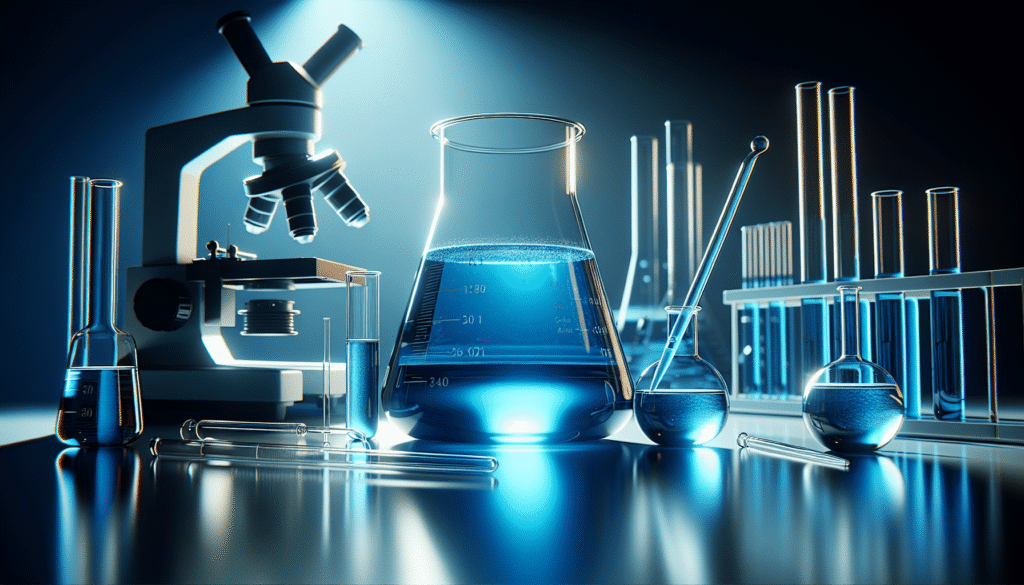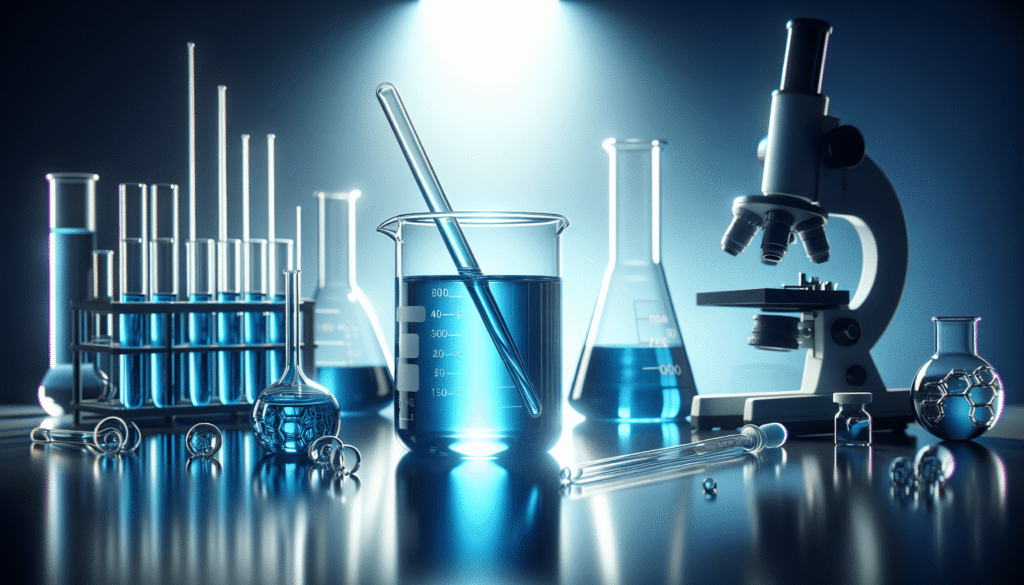
Have you ever considered how one simple dye could revolutionize your laboratory practices? Methylene blue, a synthetic dye, offers a myriad of applications that can enhance your lab’s efficiency and accuracy. This article outlines the best ways to incorporate methylene blue into your research protocols, ensuring that you harness its full potential effectively.

Understanding Methylene Blue: A Multifaceted Compound
Methylene blue is not merely a dye; it is a compound with extensive applications across various scientific fields, including biology, chemistry, and medicine. Initially discovered in the late nineteenth century, it is now widely acknowledged for its ability to act as a redox indicator, a dye for staining tissues, and even as a therapeutic agent.
Properties of Methylene Blue
Before you begin utilizing methylene blue in your lab, it is crucial to understand its properties:
- Chemical Formula: C16H18ClN3S
- Physical State: Dark blue solid at room temperature
- Solubility: Highly soluble in water, making it easy to work with in aqueous solutions
These properties make methylene blue an ideal candidate for various applications. Its solubility, in particular, allows for dynamic solutions tailored to your lab’s specific needs.
Methylene Blue in Biological Research
In the realm of biological research, methylene blue serves as an invaluable tool. Its use extends from staining cellular components to serving as an indicator for biological processes.
Cellular Staining
Methylene blue is predominantly recognized for its role in histology and cytology as a biological stain. This staining technique helps you visualize various cellular structures under a microscope.
Protocol for Cellular Staining
- Sample Preparation: Prepare your biological samples on slides, ensuring they are thin enough for microscopy.
- Staining Procedure:
- Apply a few drops of methylene blue onto the sample.
- Allow it to incubate for approximately 10-15 minutes to facilitate dye penetration.
- Gently rinse the slide with deionized water to remove excess dye.
- Visualization: Examine your samples under a microscope. You will be able to observe morphologies and structures that would otherwise be challenging to identify.
This simple yet effective protocol allows for clearer visualization of cells, which can significantly enhance your research insights.
Redox Indicator in Biological Systems
Methylene blue acts as a redox indicator, making it suitable for studying biological redox systems. This property allows you to measure the oxidation-reduction potential of various biological samples efficiently.
Procedure for Using Methylene Blue as a Redox Indicator
- Sample Preparation: Prepare your biological samples that you wish to analyze.
- Addition of Methylene Blue: Introduce a predetermined concentration of methylene blue into your sample.
- Observation: Monitor color changes in the sample, which indicate variations in the redox state.
Utilizing methylene blue in this capacity can yield vital data regarding the biochemical properties of your samples, thereby contributing to your research’s overall success.
Methylene Blue in Chemical Research
The versatility of methylene blue extends beyond biological applications and into chemical laboratories, where it serves various purposes from pH indicators to photodynamic therapy.
Photodynamic Therapy Research
Methylene blue has garnered attention in the realm of photodynamic therapy (PDT) due to its effectiveness as a photosensitizer. This involves using light energy to activate a photosensitizing agent, leading to reactive oxygen species formation that can target and kill cancer cells.
Implementing Methylene Blue in PDT
- Preparation of Methylene Blue Solution: Dilute methylene blue to a suitable concentration for your experiments.
- Cell Exposure: Expose cancer cells to methylene blue for a specific duration, allowing the compound to penetrate the cells.
- Light Activation: Illuminate the treated cells with light at appropriate wavelengths (generally in the range of 600-700 nm).
- Assessment of Cell Viability: Analyze cell viability post-treatment to evaluate the effectiveness of PDT.
This innovative application emphasizes the potential of methylene blue in advancing cancer treatment research.
pH Indicator
Methylene blue can also serve as a pH indicator, allowing you to monitor the acidity or alkalinity of various solutions.
Using Methylene Blue as a pH Indicator
- Preparation: Prepare a methylene blue solution at a known concentration.
- Addition to Sample: Introduce the solution into the sample whose pH you wish to measure.
- Observation: Monitor color changes; typically, methylene blue transitions from blue to a yellowish tint as pH decreases.
This simplistic approach to utilizing methylene blue can streamline your lab protocols for pH determination.
Safety and Handling of Methylene Blue
While methylene blue is a widely used compound, it is essential to handle it with care to ensure safety and reliability in your lab. Understanding the safety protocols associated with methylene blue can mitigate potential risks associated with its use.
Safety Guidelines
- Personal Protective Equipment (PPE): Always wear appropriate PPE, including lab coats, gloves, and safety goggles, when handling methylene blue.
- Workspace: Conduct all experiments using methylene blue in a designated lab area, preferably under a fume hood, to minimize exposure.
- Disposal: Be aware of local regulations regarding the disposal of methylene blue. Do not pour it down the sink unless it has been neutralized and diluted as per safety guidelines.
Adhering to these safety measures will not only protect you but also ensure the integrity of your research.

Optimizing Methylene Blue Solutions
To fully leverage the benefits of methylene blue in your laboratory, it is critical to prepare optimal solutions tailored to your specific applications. Solutions can vary in concentration based on their intended use.
Concentration Guidelines
| Application | Recommended Concentration |
|---|---|
| Cellular Staining | 0.1% – 0.5% |
| Photodynamic Therapy | 0.01% – 0.1% |
| pH Indicator | 0.1% – 1.0% |
These guidelines provide a solid starting point, but you may need to adjust concentrations based on experimental requirements.
Common Methylene Blue Applications in Different Fields
Methylene blue has applications beyond the lab—it spans various industries like medicine, environmental science, and food technology.
Medicine
In the medical field, methylene blue is used to treat conditions such as methemoglobinemia and as a potential therapy for Alzheimer’s disease. Understanding its applications can help you appreciate its importance in clinical settings.
Environmental Science
Methylene blue can serve as an indicator for measuring water quality, allowing scientists to determine contamination levels. Its rapid testing capabilities are crucial for environmental monitoring.
Food Technology
Additionally, methylene blue can be utilized in the food industry for microbiological testing, aiding in the detection of various pathogens. This helps maintain food safety and quality, showing its versatility beyond traditional applications.
Future Directions for Methylene Blue Research
As understanding of methylene blue continues to evolve, its applications in research are poised to expand. Innovative studies are exploring its potential in fields such as antitumoral therapies, neuroprotection, and antimicrobial treatments.
Encouraging Innovation
Encouraging interdisciplinary collaboration and research can lead to groundbreaking discoveries surrounding methylene blue. By sharing findings and exploring new applications, researchers can uncover even more benefits of this remarkable compound.
Conclusion
Incorporating methylene blue into your laboratory practices can drastically enhance your research capabilities. This multifaceted compound offers diverse applications across various fields, especially in biological and chemical research. By understanding its properties and employing it effectively, you can optimize your lab’s efficiency and accuracy. Bear in mind that safety and proper handling are paramount when working with this compound. Ultimately, staying informed about future directions in methylene blue research will allow you to remain at the forefront of scientific advancements.
Embrace the potential that methylene blue offers in your lab, and let it be a catalyst for innovation and discovery in your future research endeavors.